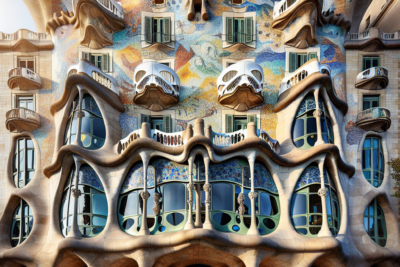
- The Architectural Genius of Antoni Gaudí: Sagrada Familia's Design
- Exploring the Symbolism Behind Sagrada Familia's Colors and Shapes
- A Visitor's Guide to the Best Times to Experience Sagrada Familia
- The Cultural Significance of Sagrada Familia in Barcelona's History
- What Makes Sagrada Familia a UNESCO World Heritage Site?
The Sagrada Familia in Barcelona, Spain, is not just a basilica; it is a monumental testament to human creativity and devotion. Designed by the renowned architect Antoni Gaudí, this iconic structure has captivated millions with its intricate details and towering spires, blending Gothic and Art Nouveau styles in a way that is truly unique.
Visitors from around the world flock to witness the breathtaking beauty of this masterpiece. The Marvels of Sagrada Familia in Barcelona, Spain: A Must-See Landmark encapsulates the awe-inspiring artistry and historical significance of this extraordinary site, making it an essential stop for anyone exploring the vibrant city of Barcelona.
The Architectural Genius of Antoni Gaudí: Sagrada Familia's Design
Antoni Gaudí's architectural mastery is vividly showcased in the design of the Sagrada Familia, where every element tells a story. His innovative approach combines nature's forms with religious symbolism, creating a structure that feels alive. Gaudí believed that architecture should reflect the natural world, leading him to incorporate organic shapes and vibrant colors throughout the basilica. This philosophy not only enhances its aesthetic appeal but also deepens the spiritual experience of its visitors.
The Sagrada Familia is distinguished by its unique structural techniques that challenge traditional architectural norms. Gaudí utilized a series of hyperboloid and parabolic forms, allowing for greater height and stability while minimizing the use of internal supports. This innovation results in a spacious interior filled with light and a sense of transcendence. Key features include:
- Skyward Spires: A total of 18 towers, each symbolic of different biblical figures.
- Intricate Facades: The Nativity and Passion facades showcase contrasting themes of joy and suffering.
- Colored Light: Stained glass windows that cast a kaleidoscope of colors, enhancing the spiritual atmosphere.
The integration of nature and architecture is perhaps best exemplified in the basilica's columns, which resemble tree trunks, branching out to support the roof. This design creates a forest-like ambiance inside, connecting visitors with the tranquility of nature. Gaudí's attention to detail ensures that every aspect of the Sagrada Familia reflects his vision of a divine space, making it a true landmark of architectural genius.
In summary, the Sagrada Familia stands as a testament to Gaudí's revolutionary ideas and his dedication to creating a harmonious blend of art, nature, and spirituality. Its ongoing construction, which began in 1882, signifies a labor of love that continues to inspire awe and admiration. Future generations will undoubtedly appreciate the enduring legacy of this extraordinary masterpiece, as it evolves into a complete realization of Gaudí's unique vision.
Exploring the Symbolism Behind Sagrada Familia's Colors and Shapes
The Sagrada Familia's colors and shapes are not only visually striking but also rich in symbolism. Gaudí meticulously selected hues that reflect the changing light throughout the day, creating an environment that feels alive. The vibrant stained glass windows are designed to evoke different emotions, guiding visitors through a spiritual journey from dawn to dusk. This interaction between light and color enhances the overall experience, making each visit unique.
Shapes play a crucial role in conveying Gaudí's vision. The basilica's organic forms, reminiscent of nature, serve to connect the structure with the divine. For instance, the use of parabolic arches symbolizes harmony, while the spiral shapes of the towers represent the ascent towards heaven. These elements collectively create a sense of movement and aspiration, inviting visitors to reflect on their spiritual journey.
Another notable aspect is the symbolism behind the colors used throughout the Sagrada Familia. The architecture adopts a deliberate palette that resonates with various spiritual themes:
- Warm Colors: Representing joy and life, these colors dominate the Nativity façade.
- Cool Colors: Found on the Passion façade, they evoke feelings of sorrow and reflection.
- Transitional Hues: Used in the interior, they facilitate a seamless flow from one emotional state to another.
Through these thoughtful choices, Gaudí transformed the Sagrada Familia into a canvas where color and form tell a story of faith, nature, and spirituality. The interplay of colors and shapes not only enhances the visual splendor but also deepens the emotional connection for those who explore this magnificent landmark, making it a profound experience for every visitor.
A Visitor's Guide to the Best Times to Experience Sagrada Familia
Timing your visit to the Sagrada Familia can significantly enhance your experience of this remarkable landmark. Early mornings or late afternoons are often considered the best times to explore the basilica, as they tend to be less crowded, allowing for a more peaceful atmosphere. Additionally, visiting during these hours presents a unique opportunity to witness the stunning light filtering through the stained glass windows, creating an enchanting display of colors.
Another factor to consider is the season. The Sagrada Familia attracts visitors year-round, but it's important to choose your timing wisely. The off-peak months, such as January and February, generally see smaller crowds, which can make your visit much more enjoyable. Here’s a quick overview:
- Best Months: January - February (fewer tourists)
- Peak Season: June - August (higher volume of visitors)
- Special Events: December (Christmas decorations)
Moreover, consider visiting during weekdays rather than weekends to further avoid the hustle and bustle. The quieter atmosphere allows a better appreciation of Gaudí's intricate designs and the spiritual ambiance of the Sagrada Familia. You might also want to check for guided tours that are scheduled at less busy times.
Lastly, be aware of the daily visiting hours, which can vary by season. For the best experience, it's advisable to book your tickets in advance and arrive early to enjoy the serene beauty of the Sagrada Familia before the crowds converge. Here’s a simple table to summarize the visiting hours:
| Season | Opening Hours |
|---|---|
| March - October | 9:00 AM - 8:00 PM |
| November - February | 9:00 AM - 6:00 PM |
The Cultural Significance of Sagrada Familia in Barcelona's History
The Sagrada Familia holds profound cultural significance in Barcelona's history, representing not only a religious monument but also a symbol of Catalan identity and resilience. Since its inception in 1882, the basilica has become a focal point for local pride, reflecting the modernist movement thriving in the region. Gaudí's masterpiece encapsulates the spirit of Barcelona, intertwining its architectural heritage with the city's artistic and cultural evolution.
Throughout the years, the construction of the Sagrada Familia has mirrored historical events, such as the Spanish Civil War and the Franco regime. Despite these challenges, the basilica has continued to rise from the ground, symbolizing hope and perseverance. The ongoing work on the building showcases the dedication of artisans and craftsmen who strive to honor Gaudí's original vision. This dedication resonates deeply with the people of Barcelona, reinforcing their connection to this iconic landmark.
Moreover, the Sagrada Familia serves as a hub for various cultural activities and events, enriching the community. From religious ceremonies to artistic exhibitions, the basilica plays a vital role in fostering cultural dialogue and engagement. Its educational programs promote awareness of Gaudí's architectural genius and the importance of preserving cultural heritage, making it an essential part of the city's educational landscape.
In conclusion, the Sagrada Familia is not just a breathtaking architectural marvel but also a living testament to Barcelona's rich history and cultural narrative. As it nears completion, its significance will only grow, offering future generations a glimpse into the artistic spirit and perseverance that defines this vibrant city. Visitors to Barcelona will find that experiencing the Sagrada Familia goes beyond mere sightseeing; it is an encounter with the heart and soul of Catalonia itself.
What Makes Sagrada Familia a UNESCO World Heritage Site?
One of the pivotal reasons the Sagrada Familia is designated as a UNESCO World Heritage Site is its outstanding universal value as a masterpiece of creative genius. Antoni Gaudí's innovative architectural style, which harmoniously combines Gothic and Art Nouveau elements, sets the basilica apart from other religious buildings. This unique blend not only showcases Gaudí's visionary design but also reflects the rich cultural history of Barcelona, making it a significant representation of Catalan modernism.
Additionally, the Sagrada Familia embodies a profound spiritual significance, serving as a site of pilgrimage and devotion for many. Its intricate sculptures, detailed facades, and symbolic representation of biblical themes resonate with visitors on a personal level. The basilica's construction, ongoing since 1882, reveals a strong commitment to both artistic expression and religious purpose, reinforcing its status as a cultural landmark that transcends local boundaries.
Furthermore, the technical innovations implemented by Gaudí, such as the use of hyperboloid structures and naturalistic forms, have influenced modern architecture profoundly. These techniques not only enhance the aesthetic qualities of the Sagrada Familia but also demonstrate a sustainable approach to design that respects the environment. This forward-thinking methodology contributes to its UNESCO recognition, highlighting the basilica as a site of historical and architectural significance.
Moreover, the ongoing construction of the Sagrada Familia symbolizes a collective effort to preserve and promote cultural heritage. The dedication of artisans and workers who continue to follow Gaudí's vision reflects a commitment to maintaining traditional craftsmanship while integrating contemporary methods. This element of continuity and community involvement further cements the Sagrada Familia's status as a UNESCO World Heritage Site, celebrating both its past and its future.
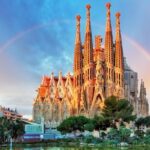 Discover the Wonders of Sagrada Familia: Barcelona Tickets 2022
Discover the Wonders of Sagrada Familia: Barcelona Tickets 2022If you want to know other articles similar to The Marvels of Sagrada Familia in Barcelona, Spain: A Must-See Landmark you can visit the category WHERE YOU CAN GO.
Deja una respuesta

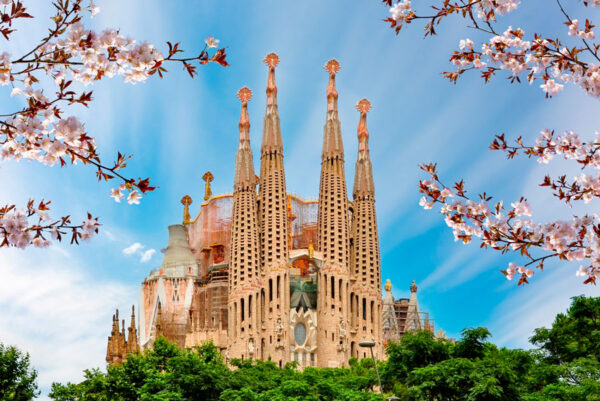
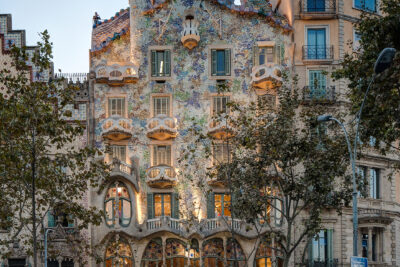
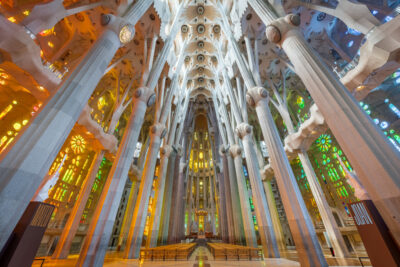
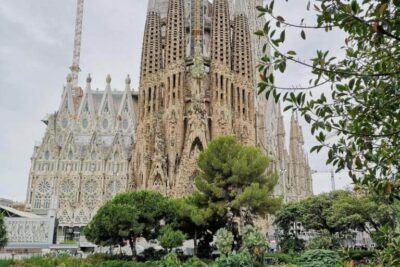
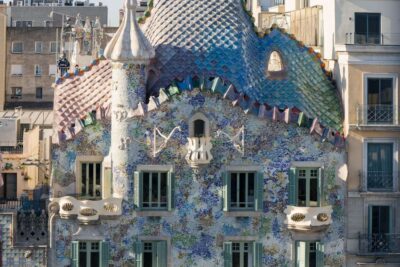
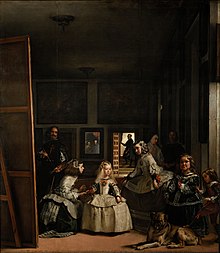
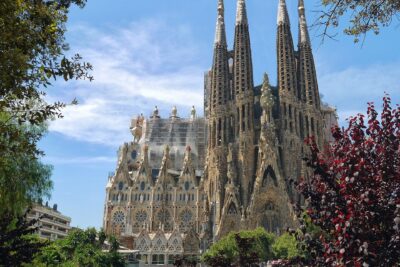
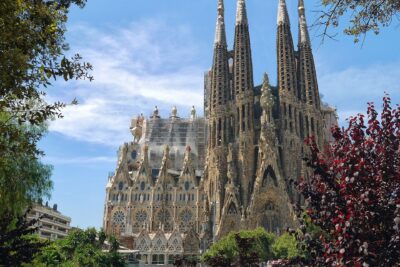
Read more!